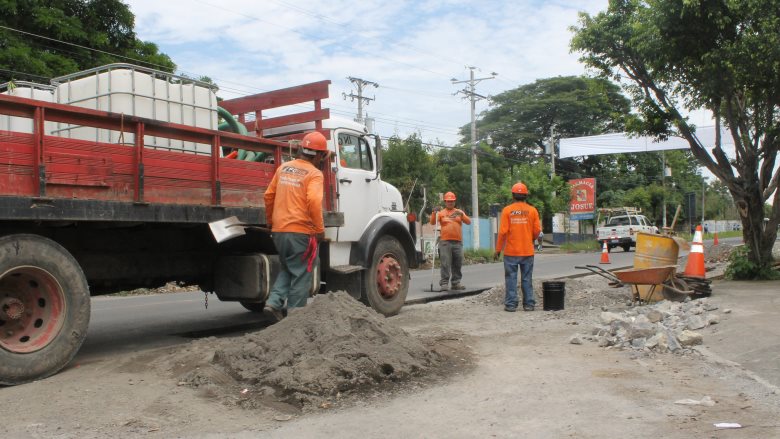Challenge
El Salvador is exposed to hydro-meteorological and geophysical hazards, and has a history of destructive earthquakes, volcanic eruptions, tropical storms, and droughts. It ranks second among countries with the highest economic risk exposure to two or more hazards and the highest percentage of total population at a relatively high mortality risk. Between 1972 and 2005, nearly 6,500 people lost their lives and experienced an estimated economic cost of more than US$ 16 billion due to natural hazards. Tropical Storm Ida in 2009 affected more than 3 million people and caused economic losses up to 1.4 percent of gross domestic product (GDP), around US$ 315 million. In the aftermath of these disasters, funding for public and social services was usually diverted to finance emergency response and the recovery processes.
Solution
Recognizing this vulnerability, the World Bank and the Salvadoran government established the El Salvador Disaster Risk Management Development Policy Loan (DPL) with a Catastrophe Deferred Drawdown Option (CAT DDO). The DPL with CAT DDO had two-goals: (i) to support the implementation of El Salvador’s national disaster risk management program and (ii) to address the country’s immediate liquidity needs following a disaster caused by a natural event. This innovative financial instrument gives a government immediate access to funds after a natural disaster, enabling a quicker emergency response and helping to avoid redirecting limited budgetary resources from other development programs.
Results
The value of economic damages and losses caused by Tropical Storm 12E in 2011 were estimated at 4.25 percent of GDP (US$ 902.46 million)—nearly three times the impact of Tropical Storm Ida. The DPL with CAT DDO provided access to US$ 50 million immediately following the declaration of a state of emergency. The operation also provided a platform to strengthen the disaster risk management policy dialogue in the country, and fostered inter-institutional information sharing, coordination, and mainstreaming of risk management in sectors. As a policy loan, the CAT DDO supported the implementation of El Salvador’s disaster risk management program, which [NCM1] achieved the following results:
- Enhanced national capacity to respond to adverse natural events: (i) Civil Protection and Disaster Prevention and Mitigation National Plan was updated in 2011 and 2012; (ii) Seven sectoral emergency response plans were developed, implemented and periodically updated; (iii) Forty municipalities developed plans for civil protection.
- Increased public investment programs, which include specific activities to enhance risk prevention and mitigation. During 2009-2014, public investments to enhance risk prevention and mitigation in key sectors amounted to approximately US$ 303 million. These achievements surpassed budgetary allocations of US$ 173 million included in the 2010-2014 National Development Plan for priority investments in environmental and risk management.
- Increased mainstreaming of disaster risk information into planning instruments at the national and municipal levels: Government ministries developed and enforced instruments to incorporate disaster risk analysis into public investment projects and development planning. For example, the Ministry of Environment and Natural Resources increased the number of seismic, hydrological, and meteorological monitoring stations from 95 to 267 between 2009 and 2014, and the Ministry of Education led an initiative to evaluate school infrastructure using the School Safety Index and found that 548 schools were exposed to landslides and 289 to flooding.
Bank Group Contribution
The DPL with CAT DDO was a single tranche operation in the amount of US$50 million, entirely financed by the Bank. In response to Tropical Depression 12E, the government withdrew the entire amount of the DPL with CAT DDO in October 2011. In addition, the Bank provided technical assistance to the government throughout implementation to ensure a good understanding of the instrument, drawdown triggers, and how to request withdrawal of funds. The Bank clarified available options regarding the activation of the revolving feature, related costs, and renewal options of the CAT DDO. In addition, the Bank provided policy advice and technical assistance throughout the duration of the DPL from 2011 to 2014.
Partners
The Bank’s dialogue with the government throughout program implementation emphasized the importance of complementary approaches and tools for the development of a sound disaster risk management framework, gradually moving from emergency response to a more comprehensive approach emphasizing the proactive reduction of disaster risks. The CAT DDO was implemented in parallel to trust fund-financed engagements with the Coordination Center for the Prevention of Natural Disasters in Central America (CEPREDENAC) to develop technical capacities for emergency response, and support for decision-making based on disaster risk assessment through the Central American Probabilistic Risk Assessment (CAPRA) initiative. The Japan International Cooperation Agency (JICA) and the Central American Bank of Economic Integration (CABEI) are also supporting the government’s disaster risk management efforts.
Moving Forward
The CAT DDO became a useful entry point for the government to articulate a comprehensive disaster risk financing and insurance strategy. The government is working towards joining the Caribbean Catastrophe Risk Insurance Facility Segregated Portfolio Company (CCRIF SPC). By joining CCRIF SPC, El Salvador will be able to purchase parametric insurance coverage similar to consequential loss insurance, which will provide immediate liquidity in the aftermath of an insured natural event. The Bank will support El Salvador towards the formulation of its disaster risk financing and insurance strategy and the selection of financial instruments through targeted technical assistance.
Beneficiaries
In October 2011, the total population affected in some way by Tropical Depression 12E was estimated at 1,424,091 people (54.7 percent of population). Upon the declaration of a state of emergency the liquidity provided by the DPL with CAT DDO enabled the government to respond quickly to the emergency and meet the needs of the affected population. The CAT DDO was also instrumental in fostering long-term institutional strengthening in disaster risk management, moving from a vision that emphasized emergency response to a more comprehensive approach of proactive risk reduction, ultimately improving the country’s resilience to natural hazards.

